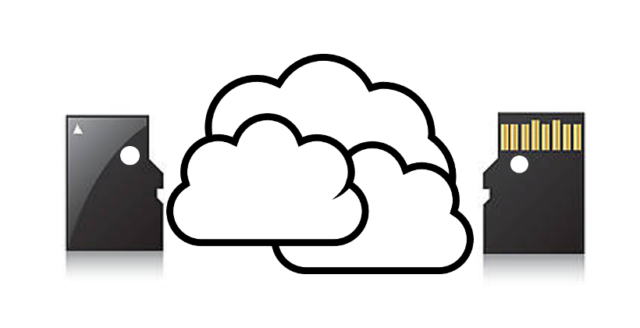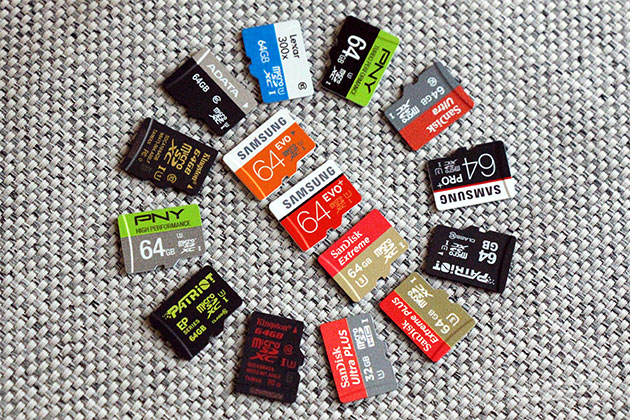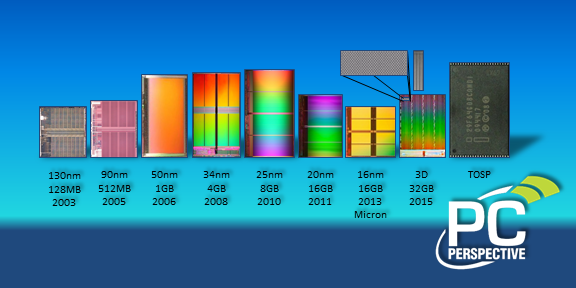A look at the prospects for the development of data warehouses from the perspective of the 'cloud ', removable and internal memory.

There are three worthy contenders in the battle for smartphone monopoly rights: longtime champion (internal storage), public choice (removable media), and newbie cloud storage. Each has its own strengths, be it price affordability for the user, profitability for the manufacturer, simplicity and ease of use, speed, reliability or stability. But, as we have seen many times, there is no clear winner in this battle. None of the options presented can come to the fore and so we end up using a combination of three options. But will each of these solutions be able to meet the growing demands of users? The internal memory 'camp' has a new 'secret weapon': 3D NAND memory.

Clear sky
The hype around cloud storage has not yet reached its climax, at least at the public level, as 75% of users still store information on their devices. At the same time, despite the emergence of very curious devices such as the Nextbit Robin, the idea of a full and ubiquitous deployment of a predominantly cloud-based storage solution is subject to careful discussion. Talking about the future of data storage with Micron spokesman Gino Skulik, the latter was understandably skeptical about the 'cloud' perspective: “Five years ago we thought everything would be [stored] in the 'cloud', but it didn't. People need instant access without any delay. Therefore, the internal memory is not going anywhere. '
The cloud did not manage to gain the upper hand and there are many reasons for this, from hiding facts about data security and access problems to the banal lack of a clear understanding of the system operation among users. Although people use the cloud much more often than they expect (e-mail, social media, music catalogs, etc.), the overwhelming majority is reluctant to send information to the cloud. And nothing will change in the near future.
The 'removable' revolution
What about removable storage media? Even when the increase in flash read / write speed contributed to Samsung's move away from memory cards in the S6 line, it still caused an outrage. Such that the company uncomplainingly backed down and returned the memory cards to the S7. The decision sparked widespread jubilation among the memory card fans. But it also affected the cost of the device.
So why shouldn't microSD be the main storage for future generations of devices? We hear constantly about speed, reliability, and security issues with modern memory cards. But despite Samsung's claims last year of a faster user experience, the relatively inexpensive UHS-II standard still delivers faster read / write speeds. than flash memory in the Galaxy S6. It was also cheaper for the user.
Cost and profitability
Most of the debate about the pros and cons of internal storage and removable media comes down to profitability. Yes, it is not as secure and not as reliable, but most users have expressed their willingness to take these risks in order to obtain a cheaper way to store information. You need to balance the adequate cost of higher storage capacity with the one that provides performance, security, and reliability.
So what happens is that internal memory will forever remain a mandatory part of smartphones? Skulik takes a wait-and-see attitude: 'Yes, we have seen a generation of devices in which manufacturers have returned to using memory cards to increase storage, but whether this is part of a strategy for moving forward, development, that is the question. I am aware that manufacturers have development plans for both scenarios – with memory cards or internal storage. Internal storage will of course be the first choice for an OEM. '
The future is 3D
But what happens if the upper limit of the amount of internal memory in a smartphone is reached? “We [Micron] think the limit for 2D is 128GB. But there is no limit with 3D NAND. It is possible to continue adding layers to the 3D profile and thus greatly expand the storage capacity range. '
What is 3D NAND and what is the breakthrough for this memory format? In fact, everything is quite simple. It uses the principle of layers. Instead of a single storage layer, layers are simply added on top of it, like a skyscraper. Micron's approach already allows for storage triple the existing NAND counterparts, and read / write speeds have grown exponentially. But won't this lead to the fact that everything will become more expensive for us?
“The good news about 3D schematics is that it doesn't require the most advanced technology, which is the most expensive to use. It is not at all necessary that the new memory format will be expensive. If you take the lowest tier 3D product and try to compare it to a monolithic 2D product, the former will cost more, but as the size changes and new levels of storage are added, the cost per bit will decrease. ' Thus, the cost to the user remains the same, or even decreases, which makes the issue unimportant. Do we need a lot of internal memory?
The next billion 'creators'
Skulik is optimistic: 'Smartphones have become content creation tools. Sophisticated users need more memory (both for storage and RAM), and therefore volumes of 6 GB DRAM and 128 GB for data are now available, work is underway on projects with 256 GB of memory. The work is not limited to the USA and Europe, it is carried out all over the world. A few years ago, there was a point of view that people in densely populated third world countries would not be able to afford smartphones and related products. It turned out not to be so. '
But the requests from users in first-world countries and emerging markets are completely different. The proliferation of LTE, access to stable electricity and internet connectivity, the popularity of photo and video-based social media, and product cycles of devices in different regions place certain demands on smartphones. In one region, 4K video and a camera with a resolution of 21 megapixels may become a mandatory requirement, in another – a battery with a large capacity and a display with low power consumption. Emerging market priorities for smartphones as they evolve will differ from those in mature markets four to five years ago. Be that as it may, the next billion users will buy a smartphone, not a mobile phone.
As Skulik notes, “If you look at the US market, we started with PCs, then rolled down to laptops, then to tablets and smartphones. In many developing regions, users start with smartphones, so the demands for memory are really overwhelming. An entry-level smartphone could have the characteristics of a five-year-old flagship. '
Where is one, there is everything
Thoughts about how the evolution of smartphones in developing countries may differ from the path we are familiar with is of some interest, but one thing is for sure: the need for more efficient and powerful devices, as well as increasing memory in terms of volume and RAM, is present on all markets. Skulik agrees: 'As the density requirements [of the arrangement of elements] increase, the power requirements should decrease. We need extraordinary energy-saving technologies that conserve more and more battery power. A positive trend is constant development in this aspect. Creative technicians create apps, games, and virtual reality applications, etc. that rely on battery power, so you need to provide the full suite: better performance, better energy-efficient technologies, and better density. '
Perhaps this is the root of the problem. Although Skulik himself invested in the future of internal memory, he, like all of us, understands that increasing the amount of memory is only part of the process. As smartphones continue to absorb functionality and replace more and more peripherals and devices, this development is inextricably linked to requests to increase power, capacity and battery charge, similar to the combination of built-in, removable and cloud storage. One cannot succeed without the other two.
What do you value more – safety, cost or reliability?
Original material by Chris Carlon
I remember well the excitement around cloud storage, but in reality everything is different, the utopian predictions of the marketing specialists of the companies did not quite come true. The position of manufacturers is clear: benefit, profit and cost reduction. It is possible that it was precisely such sentiments that at one time initiated the campaign against memory cards, in which arguments were made against removable media and their negative impact on the operation of the system as a whole was emphasized. Nevertheless, no one won from such a step, and users made it clear with their reviews about the rejection of memory cards in several current flagships.
Apparently, we will have another round in the confrontation between the three 'players'. 3D NAND looks promising, especially if the manufacturer is to be believed. Again, no one seems to be going to give up the internal memory, and the 'cloud' has its pluses. Personally, I have moved away from using memory cards, there is enough smartphone memory, I listen to music and podcasts online. I do not deny that there may be a scenario in which you may need to buy a microSD, no problem, there is no negative to the cards. In my opinion, it is not entirely correct to use only one of the mentioned methods of storing data, in any case, an option will be needed for additional safety net. And why abandon innovations in one area in favor of seemingly proven, but outdated solutions?


